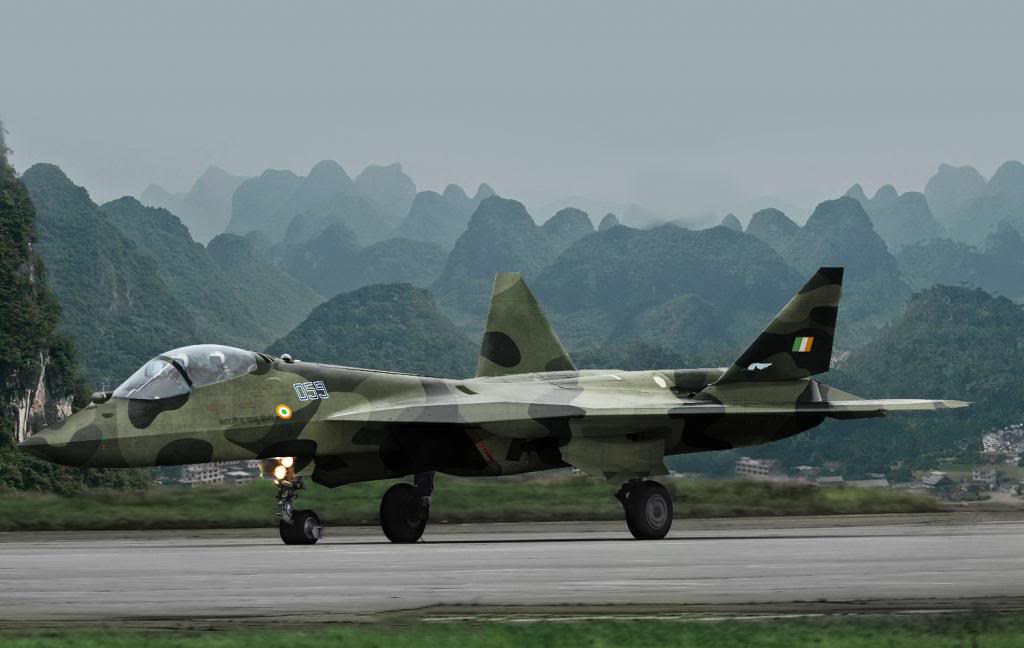FGFA (5th Generation Fighter Aircraft) for the IAF
March 9, 2017 | Expert Insights
Will India revert to Russia for the new fighter aircraft?
On 09 Mar 17, the Ministry of Defence (MoD) revealed that they remained open for a joint venture with Russia, for the design and production of the FGFA. However, this time in addition to other criteria, there are two specific requirements. Firstly, there should be full-scale transfer of technology that would enable ‘manufacture in India’, and not merely assembly of knock-down kits. Secondly, there should be tangible benefits to Indian Aviation Industry, to enable a future Indian-built stealth fighter.
Have We travelled Down this Road Before?
In 2000, India signed a deal with Russia to manufacture the Su-30 MKI, the multi-role air superiority fighter. The Russian platform incorporates Indian, Israeli and French support systems (avionics, weapons and electronics); making it a unique and best-in-class fighter aircraft. As in Feb 2017, India has contracted to buy 314 aircraft for a cost of US$ 8.3 billion, of which 272 have already been delivered.
Bulk of these Su-30 MKI aircraft, have been made by Hindustan Aeronautical Ltd (HAL). However, the aircraft have basically been assembled in India, from knock-down kits imported from Russia. HAL-made Su-30 aircraft cost approximately US$ 75 million each and are reportedly US$ 15-20 million more expensive than those directly purchased from Russia. Despite expectations from the Indo-Russian contract of 2000, HAL still cannot manufacture the Su-30 aircraft, on its’ own.
What happened to the Dassault Rafael Deal?
In 2015, after three years of negotiation, the US$ 12 billion deal with Dassault of France for 126 fighter aircraft, stalled on the question of Indian manufacture. Though France agreed to transfer technology, they were reluctant to give guarantees for the HAL production. Consequently, the Government scaled back the order to 36 Rafael fighter aircraft, all built in France. It appears that international arms suppliers are reluctant to nurture the indigenous Indian Aviation Industry.
Was there an Earlier Agreement for the FAFA?
In 2007, India and Russia had inked a preliminary contract for the design and development of the FGFA. However, by 2010 the IAF was reportedly unhappy with the design of the Russian aircraft, called the Sukhoi T-50 or PAK-FA. Amongst the improvements sought were more powerful engine thrust and more comprehensive stealth technology application.
What are the Expectations from the FGFA?
The FGFA is expected to be a swing-role aircraft instead of only multi-role. Unlike multi-role aircraft, swing-role can undertake more than one role, in the same mission.
It would incorporate advanced stealth features, making it difficult to detect with conventional radars.
It is expected to reach supersonic speeds, even without after-burners; called super-cruise capability.
It is also expected to incorporate super-maneuverability, data fusion and multi-sensor integration, within the fighter.
How does the Government Plan to Resolve this Issue?
MoD has constituted a high-level committee to examine these issues and make recommendations. The committee comprises a serving Air Marshal, an IIT Professor and two former heads of HAL and National Aero-space Ltd, respectively. The report is expected to be submitted in April, after which the Government will take a call.
Assessment
The 2016 Stockholm International Peace Research Institute (SIPRI) report has named India as the largest importer of arms in the world. Despite decades of consistent government support for indigenous arms-manufacture capability, India’s overall success can be rated as modest, at best.
In the foreseeable future, human-piloted fighter aircraft may be replaced by remotely-piloted ones. A huge challenge is the exponential speed, with which technology changes. Larger gestation period projects may become technologically obsolete, by the time production fructifies.
India needs to be at the forefront of weapons design; even if designs have short-lives and are rapidly replaced with more contemporary technologies. India also needs to create state-of-the-art arms manufacturing capacities. Only if the nation is assured with both contemporary weapon designs and manufacturing capacities, will India be able to create weapon inventories, in reasonable time, as per threat perceptions. Armed forces of the future would be expected to be armed with contemporary weapons, but with short life-cycles. They would also need to be supported with only small inventories that can be built up by manufacture, during warning periods.


